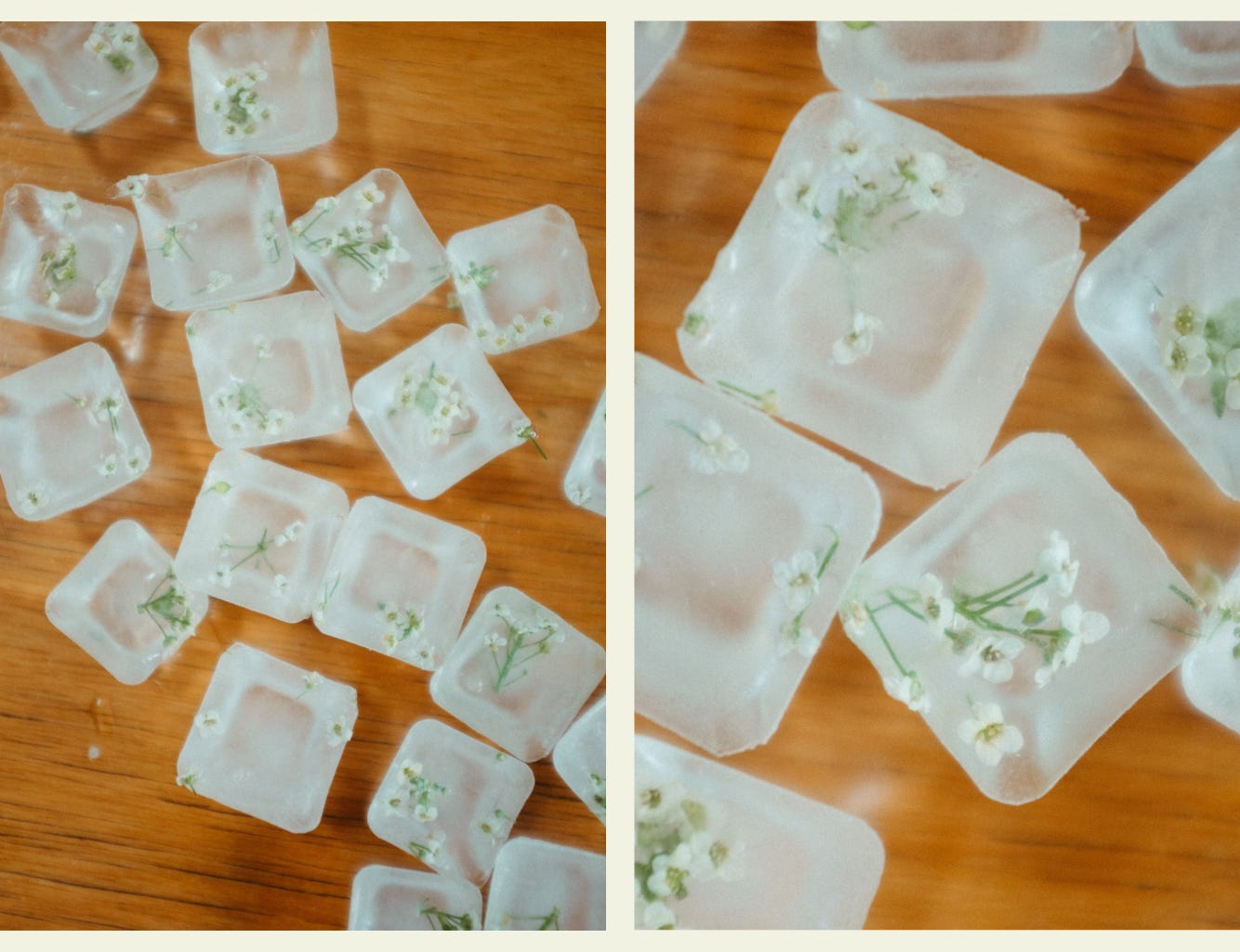Sweet alyssum, growing in the margins
Notes on alyssum which is currently springing up all through my neighbourhood.
Rain has come, finally, and with it, green has returned to the city. Plants are shooting up in every patch of earth that is bare and open for the taking. I am foraging some bits and bobs around my neighbourhood— but would like to learn more about the plants growing in the margins. So here begins a little makuru series: each week I will write a short essay on one overlooked plant that is catching my eye, and perhaps even making its way onto my plate.
On the first night I move into my new place, I take a short walk around the block and on the way back I pass a construction site. Large metal fences with their feet plugged into bright orange bases guard the half-made apartments. At ground level along the fence line, in stark contrast to all the concrete and sand behind it, happy clumps of alyssum grow vigorously, their white blossoms sticking through the fence and spilling out onto the pathway.
I pick a small bunch of stems and place them on the table when I get back to the apartment. They are the first friends I invite into my new home, and later that night there are human friends too, sitting around the table, the sweet alyssum at the centre of our warm circle.
Alyssum— also affectionately known as sweet alyssum, sweet Alice or sweet Alison— is native to mediterranean regions but its hardiness means it now grows all over the world. It will spring up free-spirited in empty blocks and along median strips, but it’s also deliberately planted in gardens for its delicate umbels of blossom that can be white, pink or sensuous purple.
Alyssum is often recommended as a companion plant for vegetable gardens because its nectar is highly attractive to insects like hoverflies, ladybirds and parasitic wasps— all of whom can help keep populations of more destructive insects in check. While most mediterranean flowers bloom for a month or two, in its native climate alyssum often blooms for ten months of the year, meaning it’s a champion food-provider for insects, especially during times of the year when little else is flowering.
It’s part of the brassica family— the same family as dinner-time favourites like broccoli, cauliflower, kale and cabbage— and just like its relatives, alyssum is edible. You can pick the fresh young shoots, leaves and flowers and add them to your salad, freeze them in ice cubes or decorate a cake with them. The taste is sweet, as you might expect from the name, but also peppery. It reminds me a little of anise.
The general hearsay is that alyssum was used in traditional medicine to treat skin irritations, respiratory diseases, scurvy and even rabies. Studies into the medicinal properties are a little under-researched, but according to a 2024 review of sweet alyssum’s medical potential, the plant has antimicrobial and anti-fungal properties as well as anti-inflammatory and analgesic effects.
When I round the corner and see the clumps of white alyssum along the path edge I feel thankful for the colour that enters my vision. Here, where heavy traffic passes, and buildings are being constructed, and the carwash drains its soapy run-off, some plants make a home for themselves. And in doing so, they increase biodiversity in the city.
Welcome, welcome, sweet alyssum says as they offer up small resting places for insects. The hoverflies and the ladybirds linger for a while, gather what nutrients they need and carry on with their important work. I also linger for a while at the fence, gathering some flowers who will greet me as I rise the next day on my first morning in a new home.
Also read… Persistently green and prolific: Rethinking my relationship with weeds







One of my favourite flowers for growing around trees in pots and are absolutely gorgeous when they cascade over the side. I didn't know they were edible, those ice cubes are beautiful. Thanks for sharing.